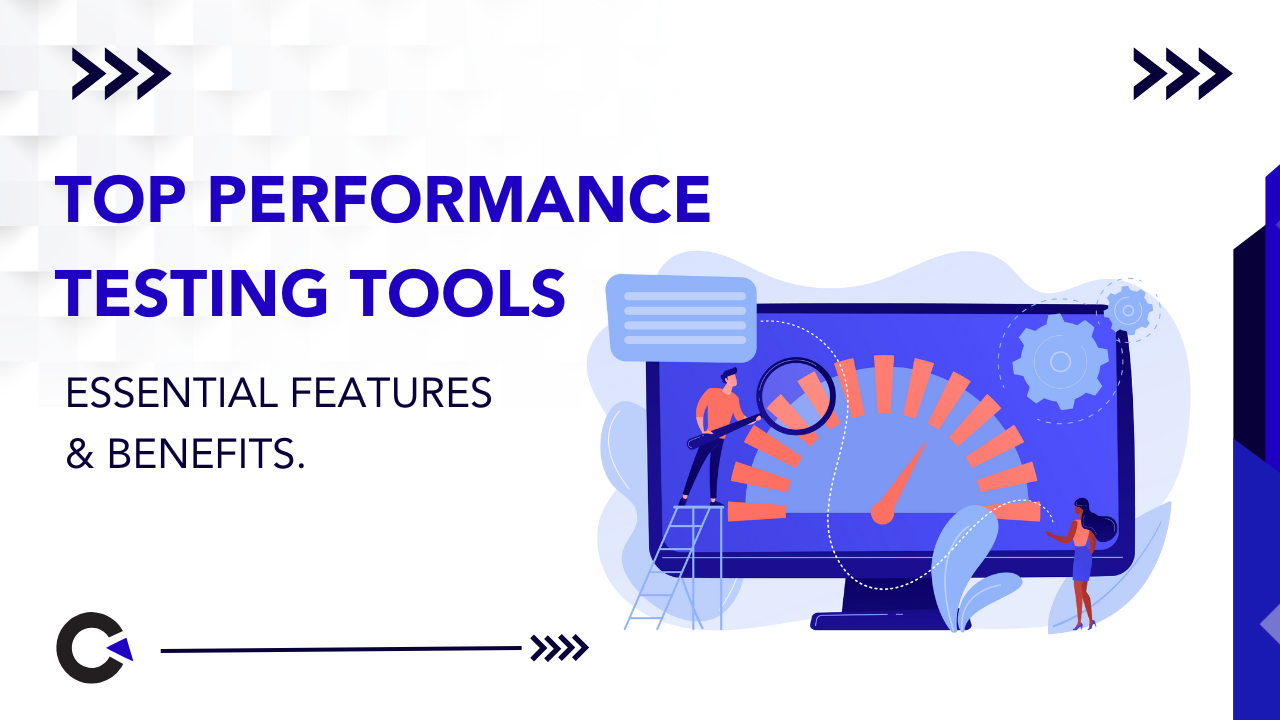
by admin | Aug 27, 2019 | Software Testing, Fixed, Blog |
Quality control mechanisms and quality assurance systems represent critical components of modern business technology. These mechanisms and systems comprise the essence of quality management practices that seek to fulfil quality requirements directed by clients and customers. QA testing represents quality control in software development frameworks and processes, these professionals, therefore, play a central role in driving quality assurance systems. These QA systems reinforce customer confidence in the ability of a QA company to deliver on its promises. Given the criticality of the function QA Testers essay, it becomes imperative for companies to understand the reasons why these professionals would quit and then find ways to retain their top-notch QA testers.
Professional Motivation
The real-time creative and technical contributions of QA testing personnel are gaining the spotlight. This implies the role of such personnel is no longer confined to finding glitches in software after completion of the development cycle. Increasingly, QA testers are participating at multiple levels, thereby elevating the quality and scope of their interventions in the software development cycle. However, such testers remain subject to uncertainty in terms of their professional growth and the quantum of impact they exert on software development. When such queries remain unanswered, they often trigger insecurity and discontent leading to attrition within the ranks of QA testers. Managers and leaders must essay a positive role by reinforcing self-belief, the usefulness of the skills of the testers, and show them a clear path for professional growth.

Tough Job Market
Employment opportunities remain subject to fluctuation in uncertain economies. The scope of employment for QA testing engineers is currently restricted, which incites insecurity in the mind of such personnel. As mentioned, such insecurities can have a serious impact on their job performance leading to potentially degraded performance and strife with co-workers. Such work environments should encourage a QA Company to offer additional training opportunities to testers as part of talent retention programs. There are several other non-financial retention strategies designed to complement good salary packages aimed at retaining the services of the top QA testing professionals.
Accelerated Professional Growth
A failing career curve could prove to a tough challenge to the highly proficient QA testing professionals. A keen awareness of and interest in new technologies (such as automation), which are indispensable for the software testing domain, are necessary to keep job insecurity at bay. Intelligent interventions from the management group of a QA Company would help stem the tide of attrition and boost the talent retention metrics. It makes business sense for industry operators to offer meaningful opportunities for professional growth to QA testing personnel. Promotions, new learning opportunities, top-notch projects, regular dialogues with superiors, and regular performance-based bonus could effectively counter the flagging enthusiasm of QA testers. The outcomes would be happier professionals, higher levels of employee engagement in the workplace, and faster attainment of business targets.
Assessing the Costs of High Turnover
Employee retention is crucial from the perspective of any organization, and the same applies to the realm of QA testing. High turnover of such professionals could impact the ability of a QA Company to deliver on client commitments. In cognizance of this, management teams must work to quantify the costs of employee turnover and initiate actions to retain their best performers. They must reinforce the professional sense of self-worth by promoting their contributions in the workplace, and ensure that employee retention strategies are refined continually. These actions must be tied to the overarching goal of sustaining the levels of the success of an organization and enhancing its reputation to deliver on the increasing and stringent demands of clients.
Revisit the Mundane
One of the reasons for the attrition of top professionals is the feeling of being stuck in a rut in the workplace. The leaders of a QA Company need to devise strategies and develop opportunities that engage the mind and creative talents of QA testing professionals at different levels. This is quintessential to employee retention in an industry where the best talent tends to migrate from one employer to the next, given the demand for their skills in a stretched industry. It becomes necessary to drive the intellectual capital to yield a multi-spectrum of results, which would provide the much-needed boost to self-esteem and morale of such professionals. By ensuring this consistently, QA companies would see a marked improvement in work performance and a much lower rate of attrition.
In Conclusion
It is important to retain their best QA testers if a QA Company expects to retain a leading edge. With long term and engaged employees, any company can elevate the quality of its services, thereby gaining the winning edge over their competitors. In an already stretched and demanding market, it becomes critical for a QA company to retain its top testers for the long term. We pride ourselves in the fact that we have the best team of testers who have been with us since the inception of the company. Connect with us to work with a highly energized and expert QA Company.

by admin | Sep 6, 2019 | QA Outsourcing, Fixed, Blog |
As a business practice, software testing services must follow procedures defined by standard operating procedure (SOPs). These sets of actions are critical because they allow software testers to deliver consistent quality output with increased productivity. In this context, proof of concept emerges as an important step that guarantees certain assurances to customers and clients. A Proof of Concept (PoC) demonstration is the process through which a software testing company tests the veracity and achievability of a proposed task or process. This demonstration convinces a potential client that the company in question can deliver actionable results within stipulated timelines.
Documenting a Shift
A Proof of Concept document may emerge when an organization undertakes to shift to automation testing practices. This shift from manual testing systems and practices may be undertaken in response to client requirements, shifts in software testing systems and practices, and growing demand for automation in software testing. In such a situation, a Proof of Concept document may outline a complete feasibility analysis report that justifies this shift. The document may outline the top three or top five tools required for automated software testing.
Planning for a Proof of Concept Document
Organizations that wish to elevate their software testing systems and practices must invest organizational resources in the creation of a Proof of Concept document. The planners may elect to design a time frame that ranges from a few hours to a few weeks, a certain quantum of company information, working space inside the offices of the organization, technical resources, trained manpower, etc. These elements, when expertly marshalled, can empower the creation of a Proof of Concept document for software testing service providers.
Best Practices
Serious preparations are necessary when software testing organizations (or the concerned division inside an organization) set about the task of defining a Proof of Concept document. Planning certainly plays a critical role, but stellar execution is necessary to create an outstanding document. In line with this, organizational actors can consult with experts, read various case studies, and seek insights from the experience of other players in the software testing domain. These preparations and the attendant best practices may generate a competent Proof of Concept document.
Dealing with Uncertainty
Current, or ongoing, projects may not be suitable for a Proof of Concept demonstration. In line with this, software testing personnel must realize that certain testing tasks do not lend themselves well to the demands of such demonstration. Hence, business operators and software testing companies must work to modulate the expectations of clients when the latter demand a Proof of Concept for ongoing projects. However, testing operators may undertake to demonstrate certain aspects of such exercises to satisfy a client’s demand. Said operators can also undertake to provide deeper assurances about demonstrating Proof of Concept for fresh projects that hinge on software testing activities.
Ideal Candidates for Proof of Concept
Certain parameters define the suitability of projects that can be showcased in a Proof of Concept document. For instance, long-term projects are ideally suited for software testing automation; this factor defines duration as a short-term or a long-term exhibit inside a PoC document. In addition, the use of regression in software testing represents another factor that demonstrates key aspects of a Proof of Concept document. The stability of an application casts an outsize impact on its selection for a PoC document. In light of the above, software testing businesses should decide on the choice of projects that will demonstrate Proof of Concept.
Technical Parameters
The shift to automation in software testing must be underlaid by favorable technical parameters to ensure the success of a Proof of Concept document. In line with this, QA teams must assess and evaluate: the platform and OS testing matrix, data-driven capability of the tool, reporting capability and report portability, debugging and logging issues, support for version control, etc. Once these parameters are validated for a certain project, software testing teams can proceed with outlining and developing a Proof of Concept document.
Results of Proof of Concept
Once completed, the Proof of Concept document must demonstrate a litany of positive factors. These include the costs of implementation, support costs, the scope for consultation in a project, the use of open source tools, learning curve, the use of various learning resources, etc. An analysis of these factors allows testers to assess whether the Proof of Concept satisfies client requirements and the particulars of a certain project.
In Conclusion:
While Proof of Concept is helpful, it may not always be possible for all projects – especially when the tasks need to be performed/demonstrated. However, where possible, Proof of Concept can be highly beneficial to the client and the company offering it. It provides an in-depth understanding of the project including the benefits and costs. Connect with our experts to know how you can benefit and take your projects to the next level of success.

by admin | Sep 5, 2019 | Regression Testing, Fixed, Blog |
Discovery and exploration are innate tendencies of the human nature. Powered by human curiosity, exploration has unearthed new continents and new horizons in ages past. This curiosity exists even in the somewhat ‘serious’ realm of Exploratory Testing that informs and drives some aspects of modern software testing practices. Software testing professionals would define exploratory testing as an unscripted technique aimed at unearthing glitches residing within a software application.

Understanding the Application
Exploratory Testing enables test engineers to gain a suitable understanding of a software application, making it a crucial form of testing. It allows testers to explore ‘the nuts and bolts’ of an application – test the various mechanics that power functionality inside the application, and discover any inconsistencies in the code underlying the application under test. Essentially, Exploratory Testing interrogates the software development process that preceded the creation of the software product. Testers may also undertake regression testing exercises on a product in the course of Exploratory Testing.
Keeping an Open Mind
Software testers who execute Exploratory Testing practices may tackle the application from any direction – meaning that software testers have a wide berth in terms of the choice of action in designing and undertaking such tests. The manual mode of testing represents the keynote of test execution that drives Exploratory Testing in the current times. Veteran testers, advocate that test coverage must be designed keeping in mind the interests of the end-user; this implies the tester must think like the customer while running the tests. Using an ad hoc approach makes this form of testing more user-friendly. However, there are certain sub-sets of Exploratory Testing wherein testing professionals devise and follow strategy-based testing routines.
Timing is Crucial
As a method of testing modern software applications, Exploratory Testing creates distinct advantages for the software development and testing industry. It supports testers to design custom test coverage plans, thereby interrogating specific applications from different points of view. In addition, most testing professionals plan Exploratory Testing schedules at points in time wherein most features inside a software application have attained completion. However, certain test professionals hold the view that Exploratory Testing should be deployed in earlier phases of application development. This divergence in views persists in the modern day, but in no way removes from the solid benefits of the techniques used for Exploratory Testing.
Distinct Value
Testing organizations that allow test professionals to undertake Exploratory Testing techniques gain the distinct benefit of leveraging the technical skills, knowledge, and work experience of software testing engineers. In addition, skilled testers adept at using such techniques can deliver distinct value to the work outcomes of testing teams. Further, Exploratory Testing helps deliver high quality products by relying on the sense of accomplishment of a test engineer. This is primarily achieved when testing engineers exploit their human acumen to connect with the end user and devise different forms of test scenarios to examine an application. Different forms of input data and test results add firepower to Exploratory Testing systems and techniques.
Organized Documentation
Engineers working on test coverage activities for Exploratory Testing require fewer forms of testing documentation. This affords them a greater quantum of time to drive pure software testing activities, thereby creating elevated business value in the form of thorough outcomes. The scenario also promotes a highly experimental approach as a keynote for Exploratory Testing activities. In addition, testers that favor this form of testing can focus on analyzing key realms of an application, generate significant levels of feedback, and recommend the necessary reforms. This implies a fruitful use of time for a tester and optimal usage of the resources within an organization.
Finding more Bugs
Certain empirical studies suggest Exploratory Testing mechanisms are more efficient in unearthing bugs and glitches in software applications – this stems from the very nature of these tests. For instance, a multi-pronged testing strategy empowers Exploratory Testing professionals to detect and unearth software bugs of varying severity. This proves beneficial to the master development processes in the form of quick remedial measures that address such defect, thereby driving higher levels of efficiency in the outcomes generated by Exploratory Testing systems and practices.
Quick Changes
The world of modern software development and testing thrives on speed of execution and delivery. The techniques and practices that underlie Exploratory Testing confer high levels of flexibility in outcomes, thereby driving crucial improvements in the overall design and function of a software product. Expert testers hold the view that the signature lack of baselines and ground rules in Exploratory Testing techniques represents a major asset that drives the utility value of such forms of testing. Further, such forms of testing exert a superb effect on the skillsets of professional (and amateur) testers – thereby elevating the skill sets of the testing personnel leading to a better hold on software testing challenges and assignments.
In Conclusion
Through this exposition, it becomes easier to appreciate the role and utility of exploratory testing in the domain of modern software development. Ongoing research is expected to refine the systems and practices that power such forms of software testing and verification. We excel not just in this form of testing, but are leaders in all forms of software testing – connect with us and rest easy knowing that your software and applications are in expert hands.

by admin | Sep 4, 2019 | Mobile App Testing, Fixed, Blog |
With the shift towards digitization and the resultant increase in the use of mobile devices to access information and company websites, it makes sense for companies to invest in mobile apps and responsive web design (RWD). It also makes sense to adopt a mobile-first strategy to prioritize the user experience through mobile devices. Companies need to partner with a software testing company that excels at responsive mobile app testing services and strategies and more, and one that consistently displays a forward thinking approach.

The reason that companies must use the services of an experienced software testing partner is that testing at scale is a major challenge, as is consistently delivering an optimal user experience. Even now, a large part of responsive web design (RWD) is manual and this too is conducted only on the release of a significant new functionality. Only an experienced team of software testers would be able to maintain reliable automated tests to cover responsive states, which in turn would ensure that no bugs go unnoticed, there is seamless user experience, resulting in an increase in users and revenue. The fact is that the billions of mobile users access websites daily, and without RWD it would be tedious and annoying for them if images or links do not fit on their mobile screens, or if these are too tiny to see. Such websites, apps, and sites are quickly dropped, with a slim chance of users coming back to them, wasting all the precious time, money, and efforts put into creating such sites and apps.
The Checklist of Testing for Comprehensive RWD
Responsive web design is primarily related to websites, focusing on ensuring that mobile users have a seamless, fast, and easy experience when viewing a website, irrespective of the device they use to view the websites. The leading search engine Google too lends priority to mobile-friendly sites in the search results, making responsive web testing strategies critical to the success of your business. As a business you must know what comprises an effective responsive design testing and the software testing/QA outsourcing company has a reputation of proficiency in mobile testing services.
Ensure Compatibility during DevelopmentThe software testing team becomes accountable and must ensure that the features and functions accessible to users of a website through their laptops or desktops are also accessible and usable by those viewing the website on their mobile devices. The screens and pages must seamlessly align to the dimensions and resolution of the mobile device in use, thereby elevating the user experience.
Ensure Compatibility of DesignThe market today is flooded with a mind-boggling variety of mobile device designs. It is not feasible or possible to perform responsive design mobile testing services on all devices. However, a broad mix of devices can be taken into consideration during the testing phase, with software experts ensuring that there are no overlaps of images and design elements. To customize testing strategies, the software testing company must consider the largest user base for their client and collect data on the devices they mainly use. Experts say that RWD testing is ideal for devices with screen resolution ranging from 320 pixels to 2560 pixels.
Easy Multiple Mode ViewingThe landscape and portrait modes are the two modes on any mobile device, and users could use either of these to view websites. It is imperative that the feel, look, and functioning of a website is the same in both these modes. The job of testers would be to check that designers/developers have ensured the auto adjustment of images and texts to fit the mode chosen by users.
Simulation of the WebExpert testers propagate that developers must focus on ensuring minimal image/file size for the mobile version of a website. This helps to reduce load time, which can be critical to success since accessibility to a high-speed network may not always be possible for users. Performance and load time must not be poor under any circumstance in order to sustain user attention and keep them engaged for a long period.
Content DisplayThere is a marked difference between content viewed on a large screen vis-à-vis a small mobile screen. Expert software testers understand this difference, and when testing, are able to ensure that the content is clear and easy to read on any screen size.
In Conclusion
Responsive mobile app testing does pose challenges, and needs focused observation and the implementation of smart and multiple testing strategies. A software testing company with experience, skill, and knowledge will be able to use a range of evaluators and testing tools to gain the best results. A progressive team of testers will however, continually learn, exchange ideas, ask questions, and communicate regularly with their clients to get the best results within stipulated timelines and budgets. For all this and top class customer service, connect with us now.

by admin | Sep 2, 2019 | Performance Testing, Fixed, Blog |
A large number of organizations fall prey to performance problems with their system, websites, apps, and other online sites. This happens since they fail to have these tested under real world conditions, and also because they remain unaware of the performance testing errors that need to be prevented. A proficient and expert software testing partner would be able to conduct performance tests without the errors, thereby ensuring top quality software. Here are some of the common performance testing errors:

Ambiguity in Defining Goals
Load testing needs clear and quantifiable goals else the testing exercise is simply a guessing game. The goals should be based on the actual requirements of the business of the client. These could be performance under normal and heavy load conditions, response time per activity, or the volume of data the system is expected to manage, and other such goals.
Incomplete/Shoddy Planning
Performance considerations of software must be in the forefront even in the design stage – ignoring this is bound to cause problems later. In fact, organizations must ensure that performance testing assurance be part of the SLAs as part of the designing phase.
Delaying Performance Testing
Some organizations believe that conducting performance testing can wait to the end of the SLDC. This is false, and an expert performance testing company would advise the client on the benefits of running performance tests throughout the development lifecycle without delay. They would also be able to provide insights with regard to the kind of performance levels that the business can expect post conducting the entire set of tests.
Too Much Emphasis on Time
This error has to do with regard to using inadequate stop and think times – that is forgetting to add the reading and reaction time of users. A meticulous performance testing regime would emulate the actual interaction that users would have with the application. However, not simulating these actual scenarios would bring up unrealistic results, causing concern and panic. Avoiding this performance testing error would be critical to success.
Testing on Single Use Case
Inexperienced software testing teams would use a single test case setting when conducting performance testing. This would not only create problems but also skew results with regard to the kind of scenarios the application would encounter in real world situations. Expert performance testers would apply appropriate and easy to use tools that would enable a variety of statistical approaches that would bring up several kinds of variances. This in turn would offer a much more realistic indication of real world use cases.
Running Tests from a Single Location
Technical reasons or budget concerns sometimes makes software testing teams run performance testing services from within the firewall. This obviously will not be a true measure of the kind of performance the application would be able to provide in a real world scenario/or under load conditions.
Incomplete Analysis/Using Assumptions
The job of a tool while running a test is to collect data/KPIs (key performance indicators). It is necessary to allow the test run to be complete before trying to analyze the data. Using the data midway amounts to using assumptions since it would be impossible to identify trends. The errors presented at the end of the test cycle are what need to be analyzed thoroughly. While this is extremely critical, it is also one of the most challenging tasks faced by testers – using an experienced performance testing company will ensure process rigor.
Applying Small Amounts of Hardcoded Data
Some testers take the easy route by using a comparatively smaller set of hardcoded static data. This in no way can provide a realistic picture of the actual performance of a live application. An expert company undertaking performance testing services would generate inexpensive data to create huge amounts of realistic evidence. This would provide a better indication of the expected performance of the app/software product once it is in the market.
Lack of Test Run Documentation
Repeating tests and comparing results from each test is an essential part of load testing services. However, without adequate documentation for the multiple tests, the parameters applied, application versions, and the varying test settings – it would be a nightmare to track the changes and compare results. A proficient testing company would provide easy to use, efficient, and transparent documentation each time.
In Conclusion
There are already a number of things that could potentially lower the performance of your product, in addition to these errors. It would make business sense to partner with a top class performance testing company to ensure that these errors are avoided at the start. Efficient performance testing forms the basis of a high quality product – and most companies are unable to get it right despite their best intentions. Connect with our experts and leave all the worrying to us – top quality products guaranteed every time.

by admin | Sep 1, 2019 | Software Testing, Fixed, Blog |
Test management refers to the activity of managing software testing process using test management tools. The purpose of test management is to meet customer expectations, develop a new software product within shorter timeframes, and achieve project goals. In this context, testing managers act as agents who provide tips, tools, and procedures to testers with the aim of guiding a project to successful completion. In an ideal scenario, test teams would collaborate with software development teams to develop high-quality software and hardware products.

Managing Software Testing Teams
The effective management of testing teams must proceed together with the use of automated test management tools. These tools are recommended since they promote a collaborative work environment, drive best practices in software testing services, and offer detailed reporting functionality. Further, such tools assist managers in writing test scripts, executing tests, and managing several teams from a remote location. Managing software testing processes increases the productivity of testing teams, and a sharp focus on test management processes increases customer satisfaction leading to the smoother execution of testing projects.
Test Management Processes
Four phases distinguish the typical test management process offered by software testing companies. These include test analysis, test planning and preparation, test execution, and test closure. The first phase analyzes and establishes the functional and non-functional requirements of a testing project. In the second phase, testers set up the testing environment along with everything required for the preparation of test planning, test data, and test cases. Actual testing begins during test execution – this phase also detects glitches within the software application undergoing testing. During test closure, testing engineers prepare test reports to record all test activities and results. The test management process must include incident management and test project evaluation based on certain metrics.
Test Management Tasks and Activities
Activities for the preparation, organization, and execution of test cases take precedence in test management tasks and activities. The organization of test cases must ensure that all the features (or functionality) within an application are thoroughly tested. Testing engineers offering software testing services must use actual test data during test case execution activities and report the results to development teams. Further, test execution processes must be monitored to improve the process and flow of test execution processes. In terms of reporting and analysis, test engineers must gather and compile all useful information to drive improvements in testing processes.
Negative Impacts on Test Management
Inadequate testing time, a lack of testing resources, spatially distributed testing teams, and a blurred view of requirements – these represent factors that can negatively impact test management activities. In response, software testing companies must carefully plan project timelines, allocate the right quality and quantum of testing resources, and outsource testing efforts effectively – in an effort to reduce the costs of testing. Additionally, testing engineers and their managers must validate business and technical requirements before the commencement of testing activities. This is crucial because a lack of clear and complete requirements may spell disaster leading to enormous waste in terms of time and money.
Challenges to Test Management
Test managers may face challenges when they seek to deliver projects on time and within budget. Awareness of testing situations and progress in testing projects represent the best defenses against such challenges. Further, managers must share the nature of emerging risks with team personnel and clients, seek insights into possible solutions, and drive interventions underlined by timely decisions. They may also try a variety of testing approaches and technical frameworks in tune with project budgets.
In Conclusion
The rising of commercial competition and complexity in testing practices exert pressure on testing organizations to develop and launch products within finite timelines. In response, software testing companies must appreciate, refine, and implement the techniques and protocols that underlie software test management. A software testing company with a team of experts would be adept at helping businesses outrace the competition – connect with us to become a frontrunner in your industry.
































